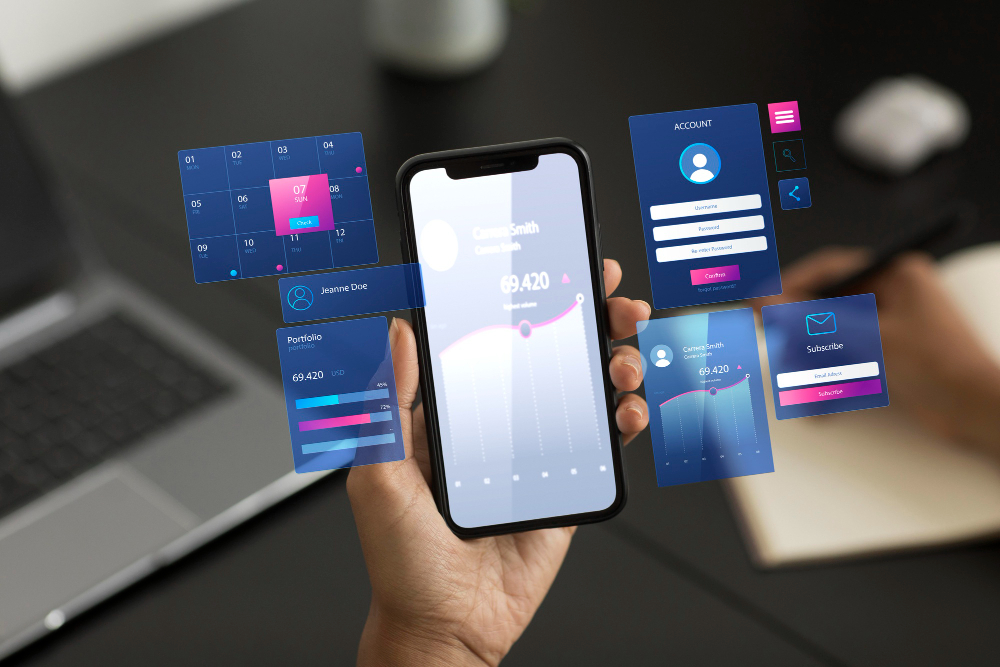
In today’s fast-paced digital landscape, the demand for mobile applications continues to soar. Businesses across industries are recognizing the importance of having a mobile presence to engage with their customers effectively. In this comprehensive guide, we will delve into the intricate process of transforming a simple idea into a fully functional mobile application with the assistance of a reputable software development company in Florida.
Introduction to Mobile Software Development
Mobile software development has revolutionized the way we interact with technology. It encompasses the creation of applications specifically designed to operate on mobile devices such as smartphones and tablets. These applications range from productivity tools and social networking platforms to gaming apps and e-commerce solutions.
Understanding the Concept of Mobile Applications
Mobile applications come in various forms, each serving a unique purpose and catering to diverse user needs. Native apps are developed for specific platforms like iOS or Android, offering optimized performance and seamless integration with device features. Web apps, on the other hand, are accessed through web browsers and do not require installation, making them accessible across different devices and platforms. Hybrid apps combine elements of both native and web apps, providing a balance between performance and flexibility.
Planning Your Mobile App Development Journey
Defining Your Idea and Vision
The foundation of every successful mobile app lies in a clear and compelling idea. Start by identifying the problem you aim to solve or the need you intend to address. Consider how your app will add value to users’ lives and differentiate itself from existing solutions in the market.
Market Research and Analysis
Thorough market research is essential to understand the competitive landscape and identify potential opportunities for innovation. Analyze existing apps within your niche, assess their strengths and weaknesses, and pinpoint areas where your app can offer a unique value proposition. Solicit feedback from potential users to validate your idea and refine your concept accordingly.
Choosing the Right Software Development Company
Selecting the right software development company is a critical step in bringing your app idea to fruition. Consider the following factors when evaluating potential partners:
Factors to Consider
- Expertise and Experience: Look for a company with a proven track record of delivering high-quality mobile applications. Evaluate their portfolio and client testimonials to gauge their level of expertise and industry experience.
- Technology Stack: Assess the technologies and frameworks used by the development team to ensure compatibility with your project requirements.
- Communication and Collaboration: Effective communication is key to a successful development partnership. Choose a company that values transparency, responsiveness, and open dialogue throughout the project lifecycle.
- Scalability and Support: Consider the company’s ability to scale resources and provide ongoing support and maintenance services post-launch.
Evaluating Experience and Expertise
Beyond technical proficiency, seek a development partner who understands your business goals and shares your vision for the project. Collaborate closely with the team to brainstorm ideas, refine requirements, and establish clear milestones and deliverables.
The Development Process
Wireframing and Prototyping
Before diving into full-scale development, create wireframes and prototypes to visualize the app’s layout, navigation flow, and user interface design. Prototyping allows you to gather early feedback from stakeholders and iterate on design concepts before investing significant time and resources.
Development Stages
The development process typically follows a phased approach, encompassing design, coding, integration, and testing activities. Adopt an agile methodology to facilitate iterative development and adapt to evolving requirements and feedback.
Testing and Quality Assurance
Importance of Testing
Comprehensive testing is essential to ensure the reliability, performance, and usability of your app across various devices and platforms. Engage QA engineers to conduct rigorous testing, including functional testing, usability testing, compatibility testing, and performance testing.
Types of Testing
- Functional Testing: Verify that all features and functionalities work as intended and meet specified requirements.
- Usability Testing: Evaluate the app’s user interface and overall user experience to identify potential usability issues and areas for improvement.
- Compatibility Testing: Ensure cross-platform compatibility and seamless performance across different devices, screen sizes, and operating systems.
- Performance Testing: Assess the app’s responsiveness, speed, and resource utilization under various load conditions to optimize performance and scalability.
- Security Testing: Identify and address potential security vulnerabilities and data privacy concerns to protect user data and safeguard against malicious attacks.
Deployment and Launch
App Store Optimization (ASO)
Optimize your app listing for maximum visibility and discoverability on popular app stores such as the Apple App Store and Google Play Store. Conduct keyword research to identify relevant search terms and incorporate them strategically into your app title, description, and metadata.
Launch Strategies
Plan a comprehensive launch strategy to generate buzz and attract early adopters to your app. Leverage digital marketing channels such as social media, email marketing, influencer partnerships, and press coverage to reach your target audience and drive app downloads.
Post-Launch Considerations
User Feedback and Iteration
After the initial launch, actively solicit user feedback and analytics data to identify areas for improvement and prioritize future enhancements. Implement a feedback loop to gather insights from users, iterate on features and functionality, and continually refine the app based on user preferences and market trends.
Maintenance and Updates
Maintain regular communication with your development team to address bug fixes, performance optimizations, and feature enhancements post-launch. Stay proactive in monitoring app performance, addressing user concerns, and staying abreast of emerging technologies and industry trends.
Conclusion
Embarking on the journey from idea to app is a multifaceted endeavor that requires careful planning, collaboration, and execution. By following the step-by-step guide outlined in this article, you can navigate the complexities of mobile software development with confidence and bring your vision to life in the form of a successful mobile application, with the support of a reputable software development company in Florida.







